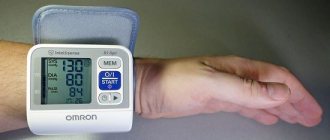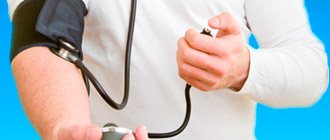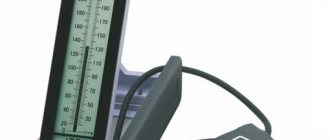A tonometer is a necessary thing in the house, and one can hardly argue with that. Many people mistakenly believe that this device is necessary only for older people, but this is not true, because attacks of poor health against the background of high or, conversely, low blood pressure also occur in young people. And in general, knowing your indicators will not be superfluous for those who consider themselves to be a completely healthy person.
According to statistics, cardiovascular diseases occupy a leading position among the causes of death in patients of all ages. As you know, forewarned is forearmed, so doctors strongly recommend monitoring your blood pressure and pulse. The best assistant in this matter is a tonometer. Many homes still have outdated mechanical models, which, to be fair, give fairly accurate readings, but are not very convenient to use and require some skill.
The market offers a wide range of modern automatic devices with a whole range of additional functions. FAN journalist decided to figure out how to choose the most accurate and reliable tonometer for home use.
pixabay.com/tomwieden
How to choose a tonometer for home use
Today, there are several options for blood pressure meters on the medical equipment market, each of which has its own advantages and disadvantages. This:
- A mechanical meter characterized by high measurement accuracy and accessibility. Air is pumped into the cuff by squeezing the rubber bulb. Among the disadvantages are: the sensitivity of the device to noise and vibration, the need for the exact location of the phonendoscope. This is the optimal solution for doctors and is not recommended for home use.
- The semi-automatic also works by pumping air with a pear. But all data is displayed on the monitor, which simplifies the assessment of a person’s condition. The device demonstrates not only the values of arterial systolic and diastolic pressure, but also the pulse rate.
- The automatic device is equipped with a compressor that pumps air without human intervention. The best solution for home use, especially when a person measures his own blood pressure.
Before purchasing, you need to pay attention to the following characteristics: availability of service or warranty service, method of powering the device, quality of the bulb (if included), type of cuff and additional options.
Advice! It is worth choosing a device from a reputable manufacturer that can guarantee the quality of its products. Among the best companies holding leading positions in the medical equipment market: Omron, A&D, Little Doctor, B.Well, Microlife, Beurer.
Cuff type and size
For home use, you can purchase a tonometer with a cuff that can be attached to the wrist or shoulder. The first option is relevant for athletes who need to frequently measure blood pressure during training, the elderly, and people with large arms. The sensor of the device is very sensitive, which leads to errors in the device during involuntary muscle contraction or during conversation. The hand should be kept leaning against the chest. This way the measurement results will be extremely accurate.
The most popular devices are those equipped with a shoulder cuff. These devices are quite accurate, but only if the cuff size is chosen correctly. For children, a conical or flat cuff is used, the coverage of which is 15-22 cm. For people of thin or average build, medium models are suitable - 22-32 cm. Products designed for 32-42 cm are relevant for large men and women. There is also a method for measuring pressure on the thigh. For these purposes, cuffs of 40-66 cm are produced. If the cuff is chosen incorrectly and is too large, the tonometer readings will be reduced. If it’s small, it’s overpriced. This will not make it possible to determine the real condition of a person.
Optimal hand position when measuring blood pressure
How to measure blood pressure correctly
Before conducting the study, the person must be in a relaxed state. The best solution is to lie down in silence for 5 minutes.
If a person drank alcohol, strong coffee, took hot baths, or smoked, then the procedure can be carried out after 60-80 minutes.
There is an assumption that the most accurate blood pressure is shown by the measurement result of the third attempt. The interval between three procedures should be 5 minutes.
Additional device features
Modern meters are distinguished by the presence of additional functions that may be useful, or may not be used by a person at all. Therefore, before purchasing, you should study the capabilities of the device and purchase a device with a set of optimal, rather than unnecessary, options that affect the cost of the equipment.
Standard blood pressure in humans
- PAD technology. Allows you to record and display data on unstable heartbeat (arrhythmia).
- MAM technology. In 2 minutes, the device takes 3 consecutive measurements, calculates the average values without having to remove the cuff and take breaks between measurements.
- Artificial intelligence Intellisense, Fuzzy Logic function. Makes indicators as accurate as possible, and the process of obtaining them comfortable. By creating optimal pressure, pain from squeezing the hand is reduced.
- Measurement quality control system.
- Alert timer.
- Clock and calendar.
- Built-in memory.
- Automatic shutdown and battery saving system.
“Talking” pressure meters are relevant for visually impaired people
No ads 1
Mechanical apparatus
A mechanical device for measuring blood pressure bears this name, because it allows you to measure pressure, regardless of external factors. The main thing is that the person is able to inflate the cuff and evaluate the result. This equipment consists of a blood pressure cuff, a pressure gauge (to measure the air pressure inside the cuff) and a bulb.
A mechanical device for non-invasive blood pressure measurement (also called a sphygmomanometer) is used as follows:
- Cuffs for measuring blood pressure are placed on the arm, as high as possible to the shoulder and secured with special Velcro.
- A phonendoscope, similar to a therapeutic device designed to listen to the chest, is placed on the ears. Its other end is placed on the inside of the elbow bend and pressed lightly.
- Next, the arm cuff is inflated using a bulb. Only after this the results and assessment of blood pressure are summed up.
To find out accurate intravascular results, you will need to place the pressure gauge in front of you and pump the bulb until the pulse can no longer be heard with the phonendoscope. Then you should feel for a small wheel on the pear and turn it. As a result, the measurement cuff will deflate slowly and the person will need to listen carefully to the phonendoscope.
At the moment when the device for measuring blood pressure begins to pulsate loudly in the ears, it will indicate the results of systolic indicators, and at what values it calms down, it indicates diastolic indicators.
In general, this is a very popular pressure measuring device, but it requires special skills and knowledge that not every patient has. Such tonometers are regularly used in clinics.
At retirement age, measuring blood pressure with a mechanical device (without outside help) becomes more difficult. If a person has not previously encountered such equipment and does not understand the essence of its work, then it is unlikely that in old age he will be able to learn to independently read information from a pressure gauge. Also, in old age, hearing begins to weaken - this is the second reason why this research technique also becomes inaccessible to older people.
As a result, in order to regularly measure blood pressure in an elderly person with a mechanical tonometer, the help of loved ones will be required. If a pensioner does not have heirs or they rarely visit him, it is recommended to use improved alternative devices.
Mercury mechanical tonometer
There is also a tonometer that measures blood pressure using mercury. Instead of a pressure gauge, it has a mercury screen, which is used to measure a person’s pressure (evaluate the results). Considering the advent of improved pressure devices, this meter is not entirely convenient to use, because it cannot be transported.
In fact, this arm pressure meter (mercury tonometer) also has a cuff. It works similarly to a modern mechanical sphygmomanometer, but to use it you will need to sit at a table and look at the mercury sensor. During the assessment of the result, the mercury column will be in front of the eyes, so reading the information will not make it difficult for the patient.
Algorithm for the procedure
The accuracy of the tonometer's readings depends on how high-quality the device is, as well as external factors. For example, it will not be possible to correctly measure blood pressure immediately after a run.
Recommendations for working with electric and other types of tonometers are as follows:
- The recommended time for diagnosis of hypertension is from 7 to 9, and also from 19 to 21 hours. It is during these periods that pressure reaches its peak, and timely identification of deviations makes it possible to respond to the situation in a timely manner.
- Many people do not know how many times they can take their blood pressure. For both hypertension and hypotension, you can limit yourself to two diagnostic procedures per day - in the morning and in the evening, if there are no separate medical recommendations.
- It is important to measure blood pressure in an atmosphere of maximum rest. You should turn down the TV volume and do not talk or move during the procedure.
- Half an hour to an hour before measuring with a special apparatus to accurately determine the values, you should not eat, take medications that can affect the result, drink coffee or strong tea, drink alcohol, engage in physical activity, or smoke.
- The best position for measuring blood pressure is sitting on a chair with a comfortable backrest. You can't cross your legs. The arm on which the cuff is worn should be at heart level. To do this, it should be placed on the table. Lying or standing, blood pressure is measured only in exceptional cases.
- Initially, blood pressure is measured on both arms at intervals of several minutes. On which arm the blood pressure was higher, the cuff should be put on that arm in the future.
- In case of arrhythmia, it is important to take 3 consecutive measurements with a device for home use. If the tonometer is not equipped with an additional function (MAM technology or arrhythmia sensor), you should measure blood pressure, relax the cuff, repeat the manipulation after 2 minutes and after another 2-3 minutes. The average value will be the true pressure reading.
- Data on systolic, diastolic pressure, heart rate, date and time of measurement must be recorded in a journal or device memory for subsequent analysis of the course of hypertension (hypotension) and informing the attending physician about your condition.
Important! It is impossible to independently diagnose hypertension without additional examination. The doctor makes an analysis of the patient’s condition based on blood tests, daily blood pressure monitoring, ECG, and only after that decides on a treatment regimen.
No ads 2
Self-control diary
For hypertensive patients, you need to keep a diary and enter instrument readings in the morning, lunch and evening. The data must be shown to the attending physician for assessment and analysis of the condition.
The self-control diary looks like this:
| date | Times of Day | Arterial pressure | Note |
| Morning | |||
| Evening | |||
| Morning | |||
| Evening | |||
| Morning | |||
| Evening |
Pressure indicators: norm and possible deviations
Despite the fact that the generally accepted blood pressure standard is 120 to 80 mmHg. Art., they are not the norm for everyone. These indicators fluctuate depending on the level of physical activity, gender, hormonal levels and age.
Blood pressure table for children, women and men by age
If the indicators differ from the generally accepted ones presented in the table, the pressure must be measured on the second hand. Usually the difference does not exceed 5 mmHg. Art. The difference is 10 mmHg. Art. may indicate the beginning of the development of atherosclerosis. With a difference of 20 mm, we can talk about pathologies in the development of large vessels.
The pulse difference is also displayed on the monitor in the form of black rectangles, which must be taken into account by the doctor when making a diagnosis. Normal values for men and women under 35 years of age are 25-40 mmHg. Art. For older people, the indicators can be higher - up to 50 mm Hg. Art. A decrease in pulse difference often indicates a decrease in cardiac contractility. Exceeding the norm may be a symptom of atherosclerosis, heart failure, endocarditis.











